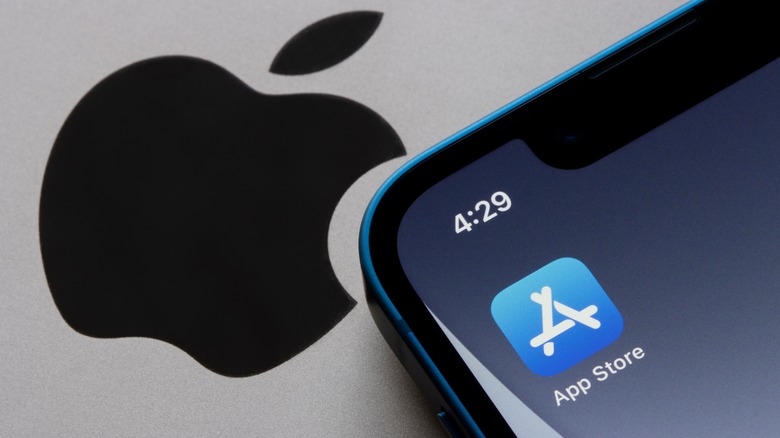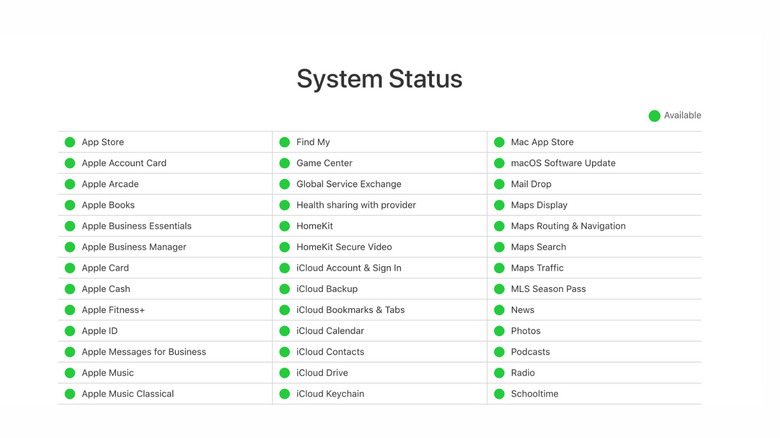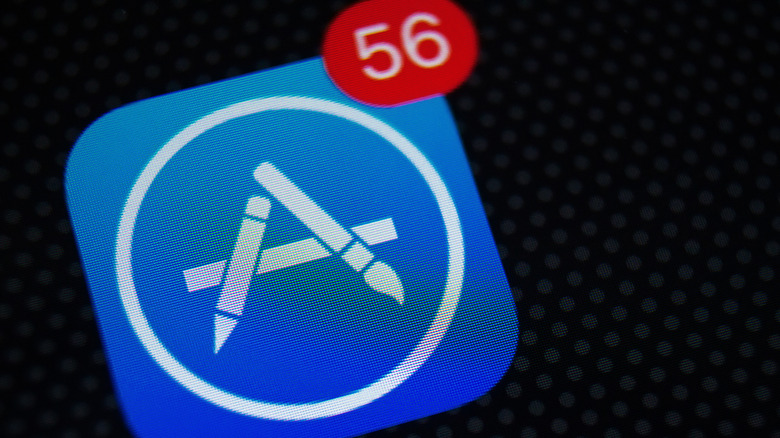Is The Apple App Store Down (Or Is It Just You)? Here's How To Tell
If you own an Apple device —iPhone, iPad, Mac, or the Apple Watch— Apple's App Store is the only source of apps for your device, which means it's a fairly big deal if you're unable to access it. You'll be missing out on camera and editing apps, games, and productivity tools that'll help you make the most of your device or nifty updates that'll improve your current experience.
If the App Store won't load even after a couple of attempts or you find that you've been logged out and can't get back in, there could be a problem with the site itself. Downtimes or server outages are common to software services, and the App Store is no exception. But there's also a chance that the problem is from your end— a spotty internet connection could be the reason you can't access the App Store, or you might need to clear the app cache to free up space for the app to work correctly.
Those are only a few of several reasons why the App Store might be acting up, but there are a few simple things you can do to narrow down the origin of the problem. The first is to be sure that it's not you, it's them. Here's how.
How to check the App Store's server status
Apple makes it easy to know if the App Store is having issues from its end. The System Status page carries real-time info about the state of all Apple online services, including the App Store. If you open the site and see a green circle next to "App Store," that means there's nothing wrong with its server. However, if the circle is red, there's been an outage or a similar issue that can only be resolved from Apple's end.
You'll have to keep refreshing the page to be updated when the issue is resolved. When that happens, the circle will change back to green, and you should see a short message such as "Resolved Issue." You can click on it to see more details about the outage and what problems other users experienced. The System Status page is bookmark-worthy since it houses status info on other Apple services, including Find My, Apple Music, Apple Pay, Apple TV+, iCloud Drive, etc.
Another method for finding answers is checking Twitter to see if other users are experiencing similar problems. You could also check third-party server-status sites like DownDetector or IsItDownRightNow for updates on whether the App Store is down. Both platforms provide real-time updates about services based on user reports. If, after your investigation, it appears that the App Store is only unresponsive on your end, don't panic. There are a few fixes you can try to get it running again.
What to do if the App Store is only down for you
The first thing you want to check on your end is your internet connection. It seems obvious, but sometimes, that's the reason that it might be overlooked. The App Store might not work correctly if your Wi-Fi connection is weak or spotty. We have a guide for easy tweaks that can help speed up your Wi-Fi connection — you can try some of them and see if that fixes the App Store not loading.
Next, you want to check your App Store settings for any preferences that might restrict downloads. For example, if you have selected the option for apps to only download over Wi-Fi but are now trying to do so on mobile data, you won't be able to download apps.
To fix this issue, try connecting to a Wi-Fi network and see if app downloads resume after that. Or, if you don't mind using cellular data, open Settings app > App Store > Cellular Data and toggle on the switch. You should know that your iPhone will use a lot of data if you choose to download apps over cellular, but here's a data-saving trick that might help you conserve your mobile data on iOS.
If all these fail, try updating iOS — malfunctions like this are part of what happens when you don't update your iPhone. The glitch might be caused by a bug that has been fixed in an update.


